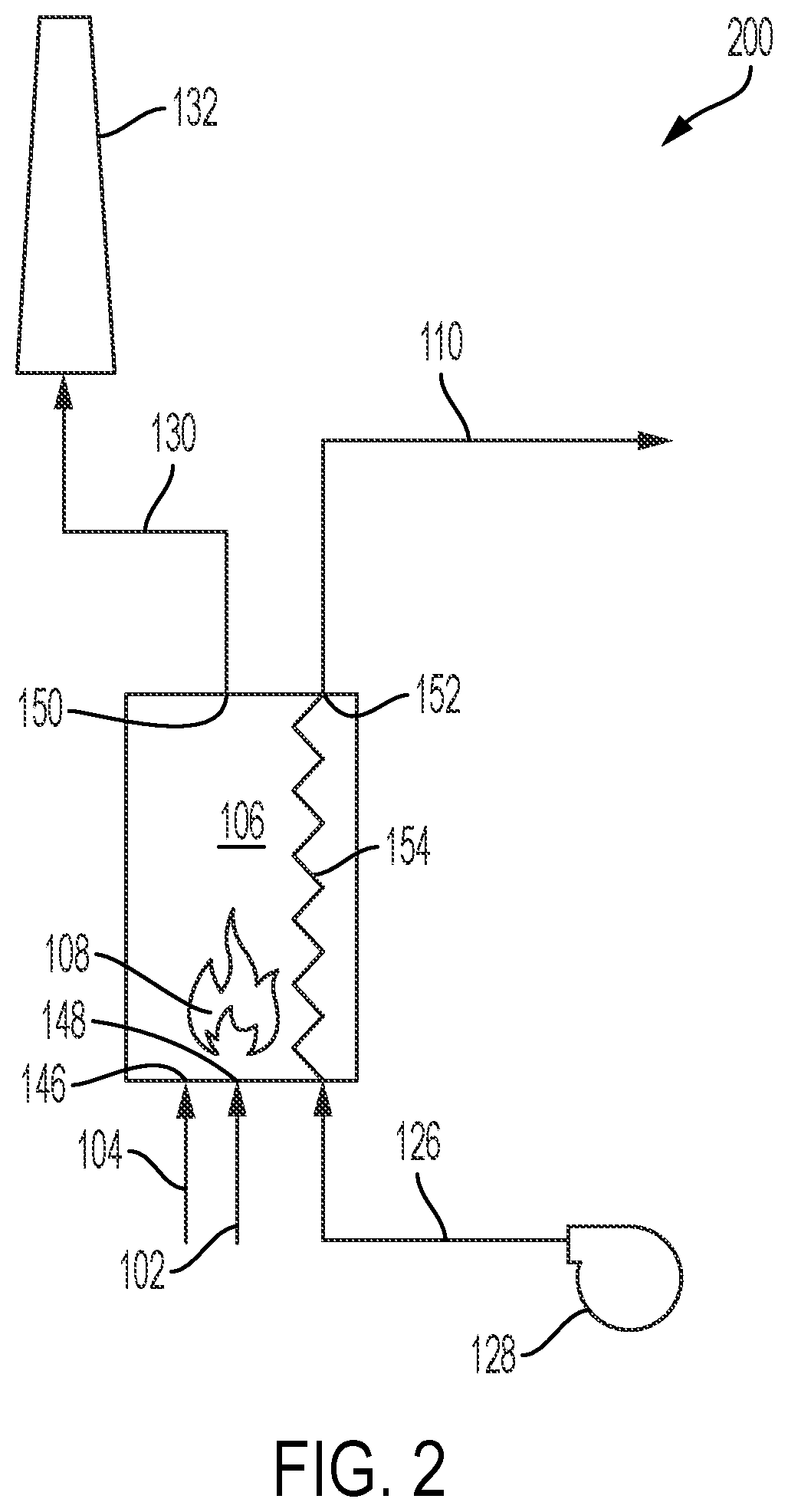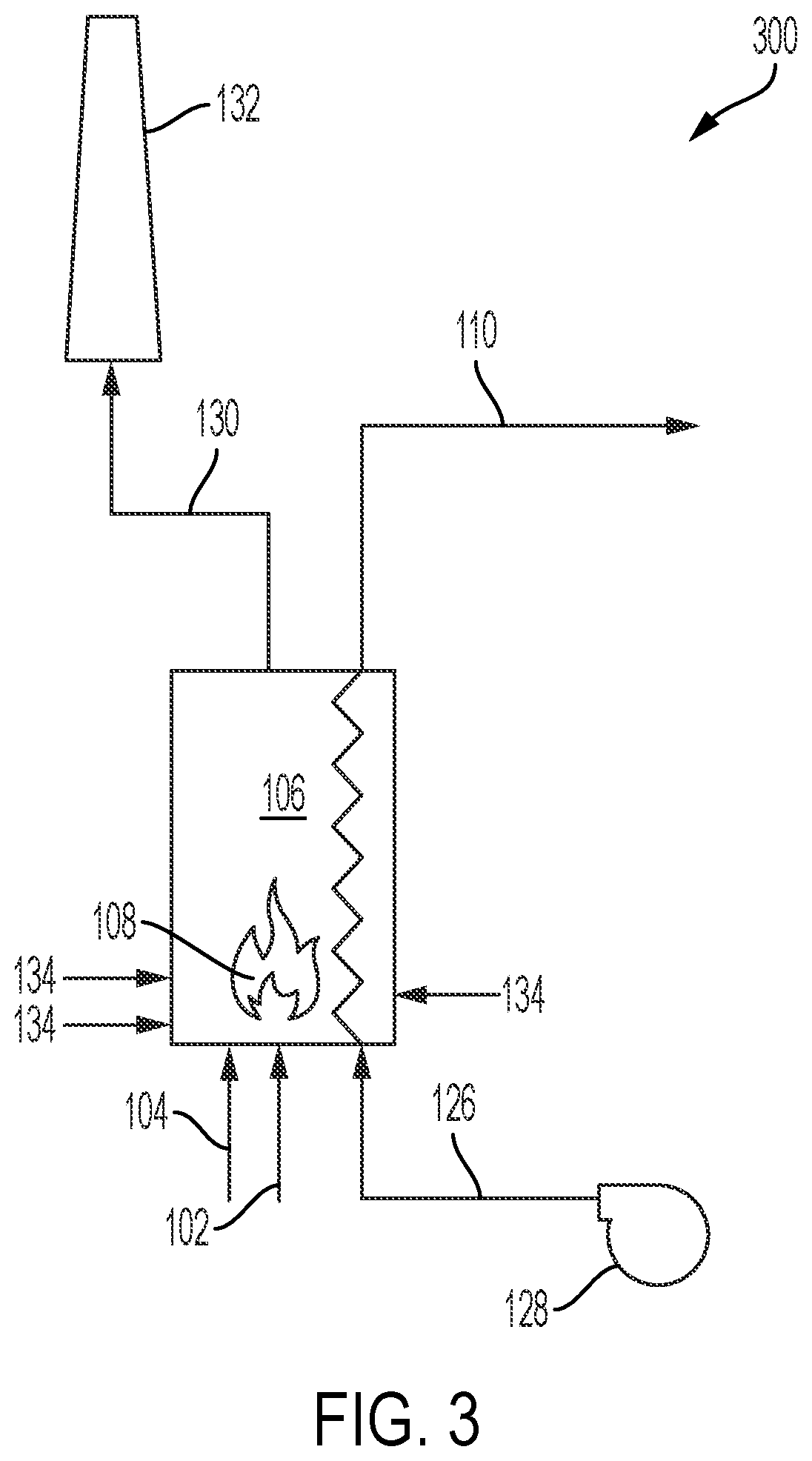System and process for electricity generation using steam production by hydrogen combustion
a technology of electricity generation and hydrogen combustion, which is applied in the direction of machines/engines, lighting and heating apparatus, energy input, etc., can solve the problems of limited wide implementation of renewable energy, inexpensive carbon-based fuels, and effectively with traditional fuels, so as to reduce co2 emissions and reduce emissions. , the effect of reducing the emission of co2
- Summary
- Abstract
- Description
- Claims
- Application Information
AI Technical Summary
Benefits of technology
Problems solved by technology
Method used
Image
Examples
Embodiment Construction
[0039]While this invention is susceptible of embodiment in many different forms, there is shown in the drawings, and will herein be described hereinafter in detail, some specific embodiments of the instant invention. It should be understood, however, that the present disclosure is to be considered an exemplification of the principles of the invention and is not intended to limit the invention to the specific embodiments so described.
[0040]This invention relates generally to a system and process for electricity generation using steam production by hydrogen combustion, and more particularly to a Rankine Cycle system and process for the generation of electricity using pure hydrogen as a primary fuel source for the generation of steam in the boiler system. Pure hydrogen herein as used herein means hydrogen with a purity higher than 99%. The Rankine Cycle system and process may also use a mixture of hydrogen with one or more secondary fuels to reduce emissions of carbon dioxide. Addition...
PUM
 Login to View More
Login to View More Abstract
Description
Claims
Application Information
 Login to View More
Login to View More - R&D
- Intellectual Property
- Life Sciences
- Materials
- Tech Scout
- Unparalleled Data Quality
- Higher Quality Content
- 60% Fewer Hallucinations
Browse by: Latest US Patents, China's latest patents, Technical Efficacy Thesaurus, Application Domain, Technology Topic, Popular Technical Reports.
© 2025 PatSnap. All rights reserved.Legal|Privacy policy|Modern Slavery Act Transparency Statement|Sitemap|About US| Contact US: help@patsnap.com



